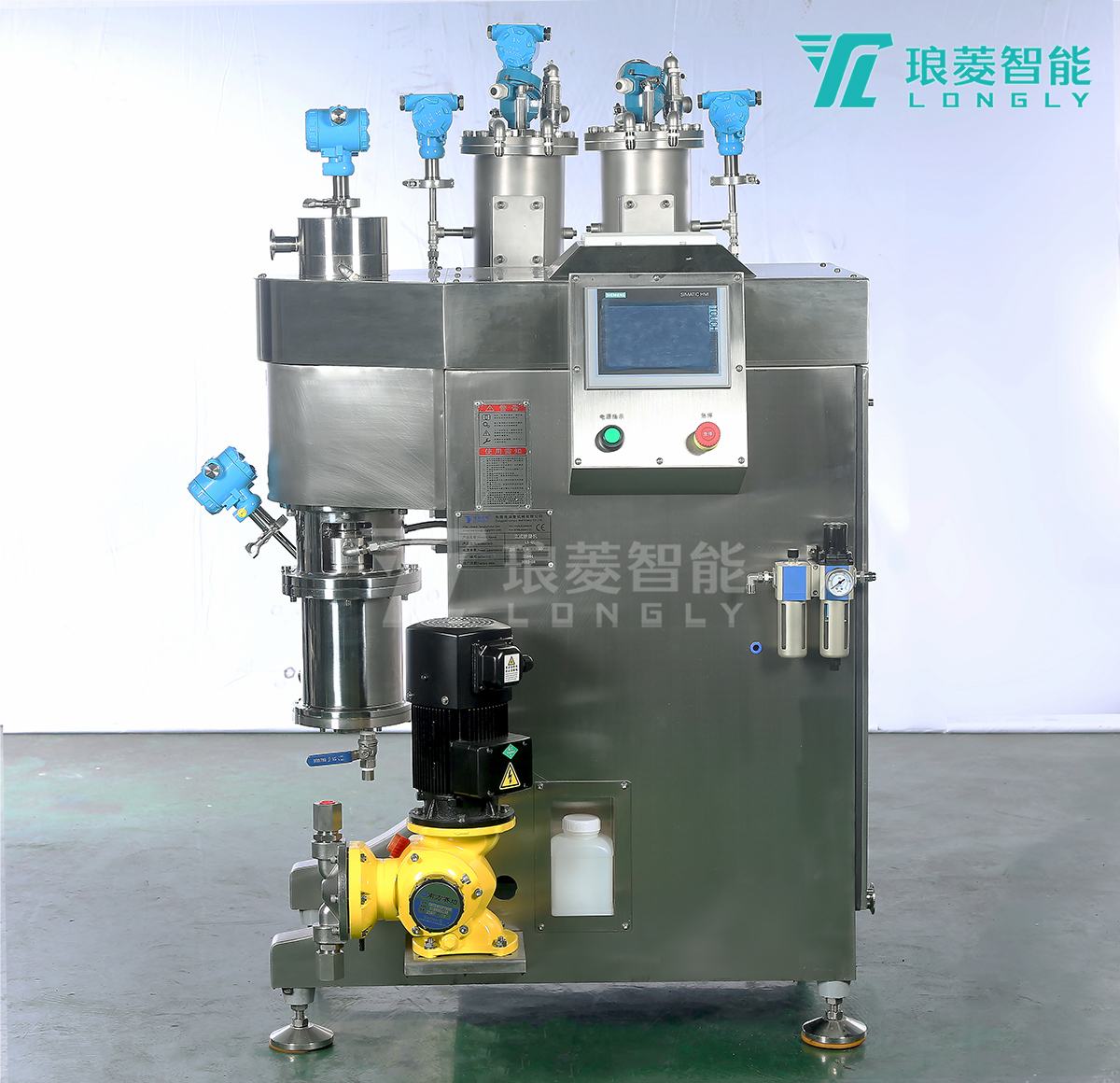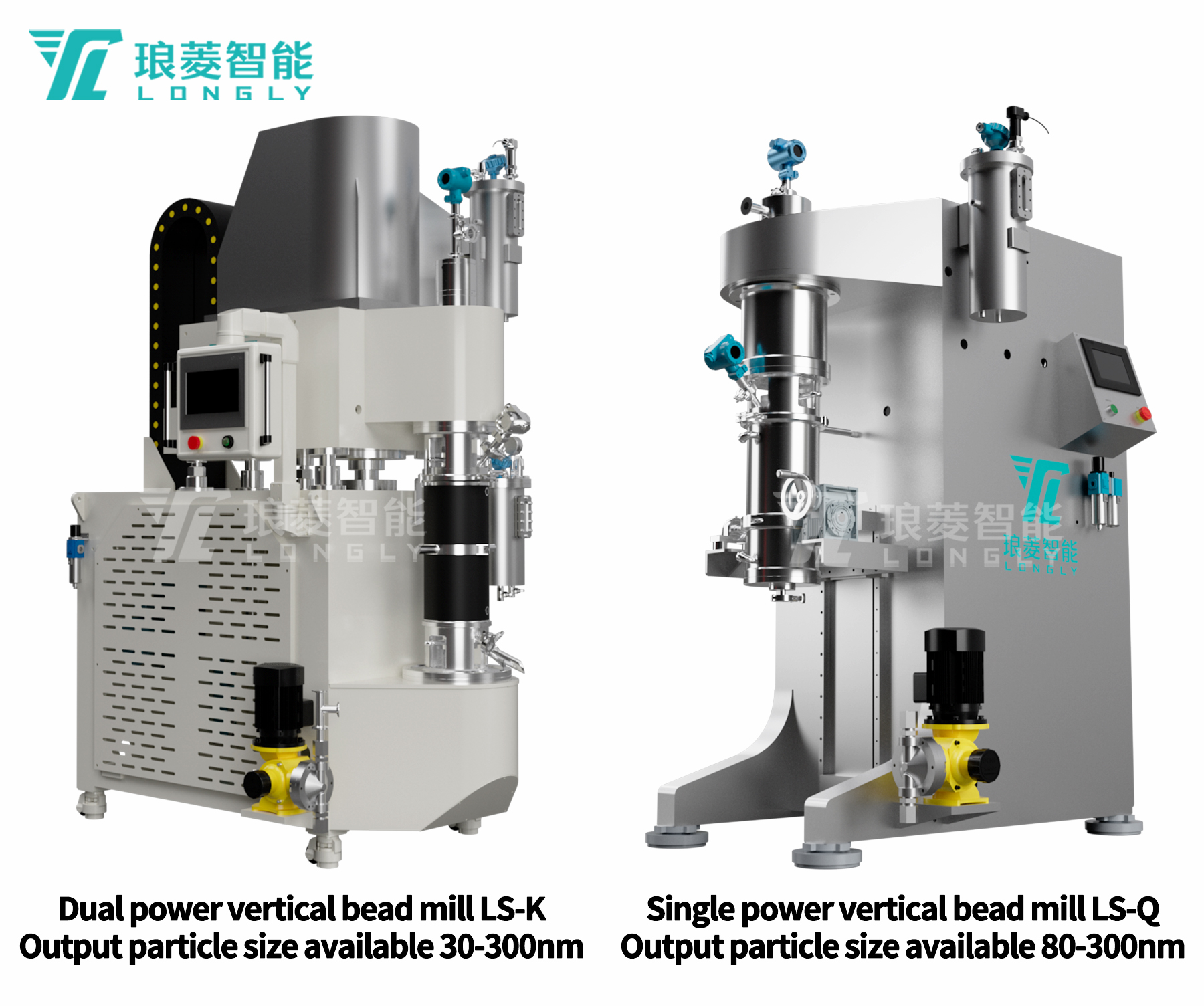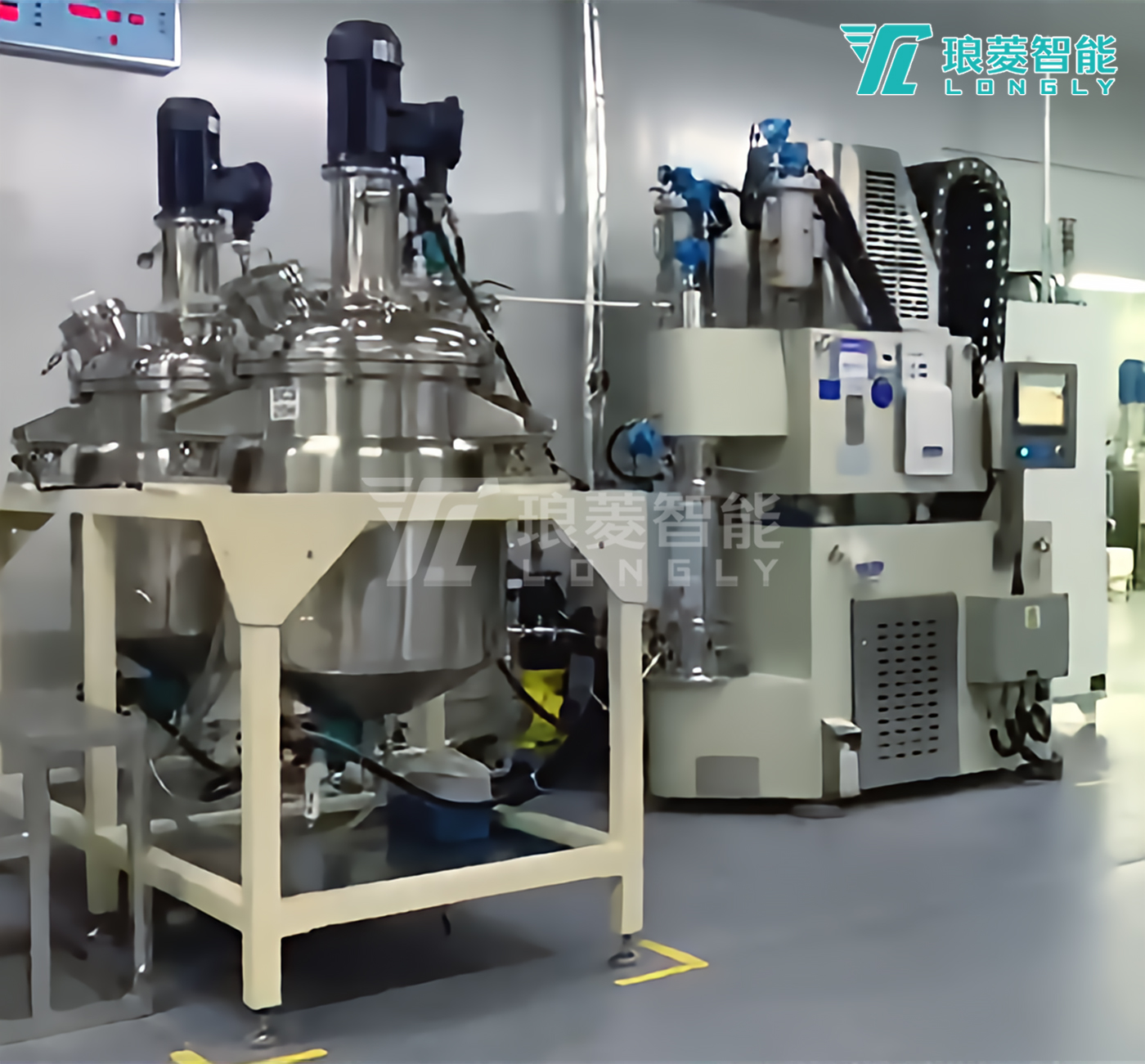
With the accelerated development of the new energy industry, the requirements for ultra-fine grinding have gradually increased, so that precision fineness and consistency in grinding the basic chemical material have been prioritized. As the current cutting-edge equipment for wet grinding, the vertical bead mill known for its stable and reliable grinding performance with narrow particle size distribution, ultra-fine particles, and other advantages, has left a wide impression.
Working Principle of Vertical Bead Mill
The grinding slurry pumped into the barrel of the vertical bead mill is fed upwards from the bottom while subjected to downward gravity. Under the pressure difference from the feeding and centrifugation force of the agitator shaft, there will be convection up and down to the slurry inside the grinding barrel so that the slurry gets fully rotated, and stirred at high speed. This eliminates grinding dead corners and solid particles can be thoroughly impacted, sheared, crushed, and dispersed with grinding beads to achieve the desired requirements.

Since the initial product is input from the bottom and output from the top, the slurry that fails to meet the expected particle size will settle down for another round of grinding due to gravity. Only when the solid particles reach the desired size will they be discharged.
Nano-level Grinding Fineness
Advances in current technologies and the development of upcoming materials have necessitated a higher standard of grinding precision. In particular, lithium iron phosphate, silicon carbon anodes, high-end electronic materials, and more in the battery field normally require fineness of tens of nanometers. Generally, the lower the grinding fineness, the smaller the zirconium beads needed.

LONGLY vertical dual-power and vertical single-power bead mills using non-screen separation can use zirconium bead as low as 0.03mm to grind slurry down to smaller particle sizes such as 30nm. The centrifugal separation method prevents the potential risk of slurry clogging and bead leakage allowing faster discharging, lower particle size, and narrower particle distribution.
Utilization of Vertical Space
The vertical bead mill maximizes vertical space, saving horizontal space for other equipment. You can take the grinding barrel apart vertically without freeing up a larger horizontal area when cleaning and maintaining the bead mill so that quickly assembled and put back into operation is available. It is more convenient to clean and replace zirconium beads.

The vertical bead mill has more impressive features. For example, the vertical grinding chamber greatly reduces the area where dust can fall, making it easy to wash and resulting in a cleaner working environment. During the working process of the vertical bead mill, the vibration amplitude is spread out by vertical gravity inertia, so the noise is low. Reduced horizontal movement reduces metal wear on machine frames and other components, extending the service life of lining plates and rollers. Combined with a smaller footprint, it can significantly reduce construction costs and input costs.